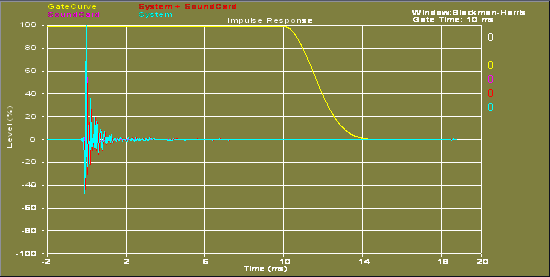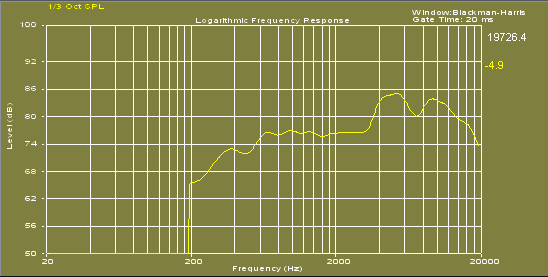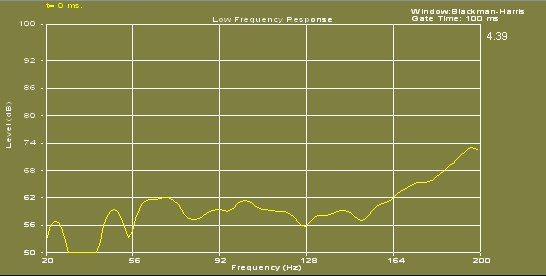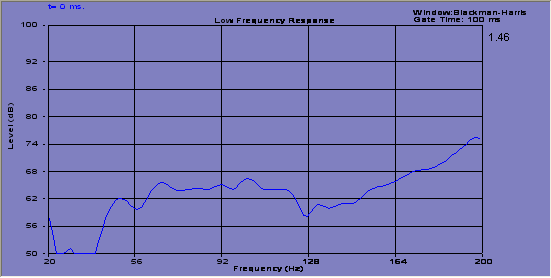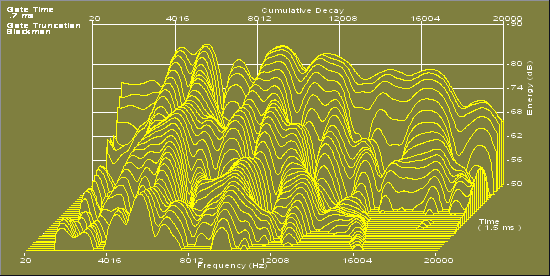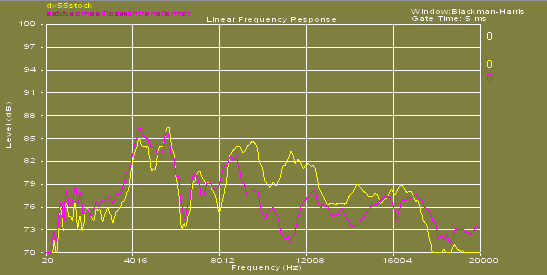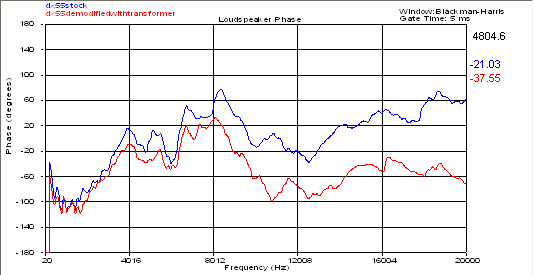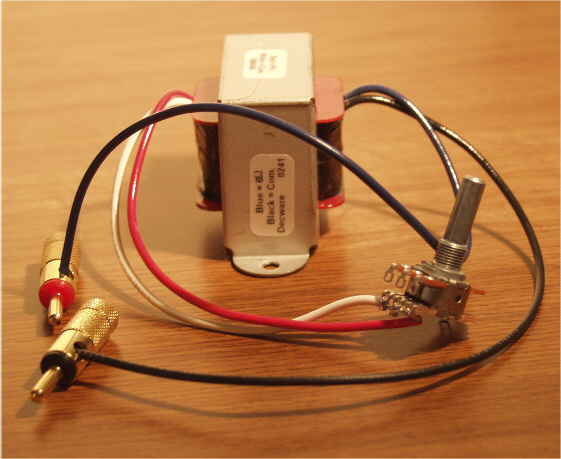|
A U D I O... P A P E R MAY 2002 LOWTHER DX-55 MIDRANGE DRIVER My journal of the full range application of the DX-55
GOALS As the manufacture of the Zen Triode amplifiers is has been a personal goal of mine to develop an audio system that sets an absolute standard for high fidelity in such a way that it can be replicated. My Zen Triode amplifiers are a foundational step in that direction. And while it took several years to perfect these amplifiers the task seems simple compared to the next logical step, ideal speakers. When you consider the obvious fact that without near perfect loudspeakers many of the hallmarks of our amps can never be fully appreciated, it shouldn't be hard to understand the motivation behind this project!
IDEAL SPEAKERS A serious step in the right direction were our Radial Loudspeakers. Significantly faster than 90 percent of the audiophile box type speakers available they begin to hint at the real timbrel accuracy of the Zens. Able to demonstrate the amplifiers unreal sound stage potential the Radials ability to disappear and unrivaled imaging gets close to being the ideal speaker for our amplifiers but there is a rub... At 91dB they are only able to achieve a normal listening level with the Zens. If you want to fill a larger room or just wish to listen at a live playback level you need a pair of amps and even then you'll only be one significant step closer. In other words if you just plain want to crank the damn things up real loud it's just not going to happen without about 30 watts. I realize that for serious listening this is largely a non-issue, but nevertheless it is a restriction I would love to overcome.
Enter the Lowther drivers. You know, those high dollar full range drivers that sell for between $700.00 ~ $1200.00 a pair and still need enclosures! The Euro based company has been around for many years and has a small cult following here in the USA and CANADA who are primarily SET owners. Lowther drivers are in the 96~98 dB range meaning a couple watts can get more than loud.
I'VE HEARD LOWTHERS That's why I continued developing the Radials. I've heard several different Lowther combinations over the years and while I agree they do some things very well, the ones I heard were not without problems. In fact I could be quoted as saying "they're too much of a good thing - the results of which can be and usually are a touch grating".
BUT THEN.... About two months ago an audiophile friend of mine wanted to hear my new listening room and the gamut of my amplifiers played out on his speakers. He had a pair of DX-3's in the somewhat controversial pair of bass reflex enclosures and I was anxious to hear them (for several reasons). One reason is that I was still hopeful that somehow I could find a combination using Lowthers as a potential match with our amplifiers. None of the Lowther systems I had heard were ever driven with my amplifiers and of course none of the rooms were very great either. Here was an opportunity to hear them in my home court with my own gear of which I am well familiar with. This would be a fair evaluation of just how good or bad the Lowthers really are.
I LISTENED AGAIN We listened to all of my amps on his DX3's and I liked what I heard. The bass reflex cabinet had some advantages over the more popular horn loaded enclosures that usually accommodate these drivers. There were some weakness too. For example, I noticed that the bass was not as tight as it is on the Radials, nor did it sound as real. But then you'll have that when you put a speaker in a simple rectangular box. On the good side was the enhanced bass response and less problematic speaker placement. Overall, the presentation seemed quite good and I heard a level of refinement in my amplifiers I did not know was there (a special moment). The Select Zen Triode (SE84C-S) ended up being almost twice as fast as I thought it was, leaving me somewhat stunned. There was enough good things happening with the sound that I felt confident I could design (or perhaps have already designed) a few good cabinets with the hope of offering a Lowther based speaker in our own product line. This two or three hour tease raised my hopes enough to commit some R&D money into a couple pairs of Lowther drivers.
I FINALLY GOT ONE
While most Lowthers are 8 inch and I could modify the cabinet for 8 inch drivers I really didn't want to unless all else failed. So I decided to order the Lowther midrange driver with an Fs of 80 Hz based on the assumption that the 30 Hz fs of the 8 inch drivers would get too bass heavy in these rather amazing horns. As you can see from the photo there is an optional high frequency lens for use as a two-way. In these smaller rooms I used a good ribbon tweeter just above the 6 inch driver (not in picture).
FIRST IMPRESSIONS Not terribly good. The drivers were packed well, but the inside cone was less than round (like many other Lowthers that I've observed) and that burst the bubble of hope that somehow mine would be perfect. The phase plugs were not centered on the pole piece and are a rather inexpensive plastic. The casting marks on the frame all too evident, and the general fit and finish suggests these are hand made drivers (which they probably are). All of this scrutiny was brought on by the simple event that they somehow feel these speakers should cost $700.00 for the pair. Having a speaker repair business for 10 years now, my first impression was that I could have done a better job myself. At best I can only see justification for a price tag of around half this amount. Naturally the next thought to follow was "well they better sound damn good..." so I removed my long time reference drivers from the horns and installed the DX55's.
WORK BEFORE PLAY Before even hearing them I wanted to know right off how well these drivers were going to like my horn cabinets. After installing them I did some in depth measurements. The fs of the driver was indeed 80 Hz. The total Q of the woofer in the cabinet was on target but the impedance was a small concern. The DCR was 8.2 ohms, a lot higher than I had hoped. The Zen Triodes like a lower impedance (with the exception of the Zen Integrated which likes everything). The impedance plot showed a nice bump at 55 Hz followed by a huge rise at 110 Hz. I figured this would no doubt have an effect on the frequency balance and was afraid it would lean things out a little too much. Lowthers are well known for being on the lean side and wanted to stay away from that!
FIRST LISTENING TEST After installing the drivers and mildly adjusting the cabinets I hooked up my signature mono blocks and let it rip. The very first thing I remember thinking is that my hope for similar flat to 40 Hz bass response was not going to happen, there was no apparent bass response. The sound was super thin. After a few minutes I realized that something was really wrong with not only the frequency balance but also the timbre of the midrange and top end. A rather disappointing first impression even though I considered the lack of break-in. And in le of that I spent the rest of the day doing other things while they worked off some burn in time.
SECOND LISTENING TEST The following evening I went for round two and logged a couple hours with the new speakers. I quickly found out that because of the apparent abnormal frequency balance they didn't start sounding good (I use the word 'good' cautiously) until you turned them up to a fairly loud level. From this point forward I put on my mental filter and tried to ignore the leaned out frequency balance and so on and focus on some of the things they were doing right. Since I got suckered into playing them at a significantly loud level right off the bat I got surprised by their transient response and overall speed. Far and away the best I've ever heard in those two categories. The 8 inch Lowther's were never like this. Until that moment my reference for speed and absolute fidelity has always been a great pair of electrostats. (Even though they had faults of their own, in the speed department they are in a league of their own). I was hearing attack and acceleration from the DX55 that was more impressive than the best and biggest electrostats. It was more dynamic on drums than high quality PA speakers on very large amps. It was better than a 500 watt cost no object audiophile system cranked to the wood. This from a pair of 6 inch drivers was a hard pill to swallow, but I heard it happen. My most trusted second set of ears, with 30 plus years of experience, also confirmed my impressions. The snare drum cracks were so real it was completely believable. By comparison the electrostats are more cushy. So getting to listen to my own amplifiers at live playback levels with dynamics I've never experienced on any other system regardless of power put us both in a far more forgiving mood. I was high on this for the rest of the night.
THE THIRD LISTENING TEST I let a couple more days of burn in go by and then went for try number three! I was hoping the there was some merit in the old saying; "Third time's a charm" and that the speakers would decide to have some bass or at least mellow some by this point. Well this was not to be the case. The unnatural timber in the midrange and queer frequency response was so distracting I just got stressed out. In fact I was ready to just throw the damn things away. After a long pause I decided to deal with it and pushed on. I hooked up my WO32 sub to put back the bass that my horn cabinets naturally had with their previous driver in a desperate attempt to make the rest of the session less painful. Adding a bottom end made listening to dynamic music at louder levels sound like you had at least a pair of 15 inch drivers. Again, some amazing performance in dynamics and detail. I tried some tweaks for the next hour to tame the midrange and treble but nothing was working and I was on the verge of getting pissed off.
THE FOURTH LISTENING TEST Several more days pass, the listening room looks like a bomb went off. I avoid walking in there while having thoughts about manufacturing a driver that actually works right at about half the price... Finally I go in for the fourth battle. I had, as others confirmed, what seemed to be a pretty flat response, but with a very British signature that was overly dry and peaked out in the treble. To my ears the frequency balance I was hearing was a fairly straight line between 75 Hz and 20 kHz but a line that headed up hill to a difference of 20 dB. Something was really wrong here and I was determined to find out what it was so out came the test gear and laptops. With some irony my measurements were not coming out right. I couldn't get enough gain from the calibrated mic preamp and didn't trust the results it was showing me - even though it was an almost perfect straight line between 200 and 20000 with a difference of 18.6 dB. It turns out the cause was a bad mic cable but I didn't find this out until the following listening test. Even with the bogus readings there was a pattern. This trend was enough to let me know I wasn't dreaming so in desperation I searched around the shop for solutions. I tried every tweak I could think of along mechanical lines and nothing worked. I then realized that this is the price one pays for going to the extreme end of the scale ~ such as Lowther has done by making these drivers as efficient as they could. A little more mass right now could do wonders for fixing this ridiculous frequency balance. Once all of the mechanical tweaks (including wave guides and phase plugs) failed, it was time for dreaded electrical tweaks. I was going to have to try a crossover or notch filter of some sort in hopes that I can make something listenable out of this rather expensive investment.
A MOMENT OF DISCOVERY After proving what I already knew - that a coil was not the answer - I had a real Zen moment. From hearing what the coil did, I knew a much more esoteric and deliberate type of equalization would be needed if I didn't want to loose the few wonderful traits the driver did have. I decided to try something totally off the wall that would modify the impedance curve and gently coax a more balanced response out of the thing. I wound an air-gapped transformer on a silicon steel core with a low impedance primary and a low DCR with the intent of putting it in series with the driver. I wound a high impedance secondary on the same high quality core and shorted it to dampen the primary. This was rather fascinating because without the secondary shorted, there was little that passed through the circuit, probably a 12 dB cut in output across the board. Shorting it coupled the transformer so well that you couldn't hear much if any difference between having the unit in or out of the circuit. I knew I was on to something when I decided to make it variable. It took the 9800 ohm impedance of the secondary and shorted it across a 100K (ten times the secondary vale) variable potentiometer. I installed the "gizmo" in such a way that I could A/B the speakers with and without the device and did so many times. The variable pot was the ticket. It allowed for a wide range of control. I found the best setting by starting with it all the way up (which is basically non-detectible) and then slowly backed it down in small increments. I was thrilled that the only things it seemed to attenuate or repair were the things I was trying to get rid of! Everything else seemed untouched or rather I should say it actually improved quite a bit. With the device in the circuit the strange signature in the midrange that was driving me nuts instantly went away. The frequency balance improved dramatically, and the sound stage got WAY MORE coherent. I really couldn't believe it. I was now hearing the correct midrange and the timbre of instruments and cymbals were dead on. It was a win win situation. You know the old saying that everything in audio is a trade off. In 25 years of trying the break that rule I never have. In the end it ends up being how well you balance the compromises. With this most recent experience, I feel like I finally got away with something! Give me a year to listen to it and I may be able to pin point some things that actually did get worse... but I seriously doubt it. Even if I do, it's good enough to fool me right now, and that means it's good enough. It kept me from getting rid of the DX55's and making them my new reference speaker - so, perfect or not, I'm damn happy with the results!
To my ears, the problems with both the frequency balance and timbre went away and the speakers now sounded not only flat, but level. As I mentioned I was a little surprised to find that the treble did not suffer, nor did the transient response or attack. The bass is not softer and there is far more of it. In fact I can hear no side effects whatsoever. The sound stage improved, the imaging improved, and I got rid of the sub. Now that I was happy with what I was hearing I could hardly wait to do some measurements and see if what I am hearing can be measured. I was dyeing to see what was happening. I will mention that what I was hearing was better texture and better organization of harmonics which I attribute the better imaging to. Most of what I will be able to measure will be strictly frequency and impulse response, both of which are far less dimensional than the coherency of harmonic structures. With this in mind I was prepared for a few surprises. I used a calibrated microphone at a distance of 1.218 feet centered on the DX55 driver. I also tested the listening position and other locations about the room, as well as the driver in free air to get a sense of what changes. The listening position is less peaky than the mic position of just over 12 inches. Testimony of how good the room is. The first series of tests were done on the stock DX55 driver to try and discover why it sounded the way it did.
IMPULSE RESPONSE - STOCK DX55 The impulse response is the best I've ever measured on any type of speaker. This certainly agrees with what I heard. It remained unchanged with the "gizmo" installed in series with the driver. That would indicate that there is no ringing or resonance's in the transformer I made.
LINEAR FREQUENCY RESPONSE OF THE STOCK DX55 Keep in mind that the proper interpretation of measurements in how they relate to what you are hearing is very difficult. We always want to see that flat line, but it never happens. But, a 10 dB rise at 4 kHz certainly agrees with what I was hearing. It's no wonder they sounded like they had no bass. Once again I started stewing on the price tag. You would think for $350.00 ea. that the response could be a touch flatter than this! However there are a few factors to consider; A) the impedance of the speaker is very high at 110 cycles - directly in the meat of the bass. B) The amplifier used for this test was my signature Zen Triode Monoblock which does not like high impedance speakers. It puts out less power as the impedance rises. This no doubt is contributing to the thin signature and lack of bass and could also account for the rolled off high frequency response. So when I look at the plot I give the bass about a 3dB handicap. Even then, still pretty iffy standing next to the rest of the spectrum! If you study the plot, everything above 8012 Hz is largely irrelevant, not really a big problem. It is the octave below that where we have the huge rise from the bass to upper midrange frequencies that was driving me nuts and needs the attention. I spent several hours trying to make it go away by modifying the driver and it didn't matter what I did, the contrast between 2 kHz and 4 kHz remained the same. This told me that it wasn't a resonance problem with the cone, nor a phase problem with the phase plug, or anything having to do with the moving mass. It is a side effect from pushing the flux too high and the resulting Thiel&Small parameters. Nothing can be done about it. I suspect that other Lowther drivers will be similar. How they find this acceptable is beyond me.
LOGARITHMIC FREQUENCY RESPONSE - STOCK DX55 Here is the logarithmic frequency response that gives us another perspective on the frequency balance. You can see the ETF system used to make these measurements divides high and low frequencies at 200 Hz. Below is the low frequency response below 200 Hz.
LOW FREQUENCY RESPONSE - STOCK DX55 in the DECWARE enclosure. As you can see, the extension is pretty impressive for an fs of 80 Hz thanks to our amazing cabinet design, but the entire bass response is about 6 dB down from where I'd like to see it (and hear it!)
MEASURING THE GIZMO! From this point on it was time to see what adding the magic gizmo into the circuit did. The magic gizmo is also referred to as the modified DX55.
LOW FREQUENCY RESPONSE - MODIFIED DX55 Notice that the modified DX55 has a significant rise in bass response. Almost 4 dB on average in the band between 40 ~ 128 Hz. Again, remember these tests were done with the Zen Monoblock accounting for around a 3dB loss in this region. This was later confirmed with the Zen Integrated which likes high impedances. It was able to shift this band up between 3 and 6 dB depending on how the amp was set. That made possible a total of almost 10 dB of increase in the bass response by simply using the "gizmo" and our integrated amp. In fact it was possible to get the speakers to actually sound bass heavy (the design intent of that setting on the integrated amp). Boy this is getting good isn't it :)
CUMULATIVE DECAY - STOCK DX55
CUMULATIVE DECAY - MODIFIED DX55
CONCLUSIONS It is difficult to really connect what you see in measurements with what and how you actually hear what you hear. The cumulative decay plots are a wealth of information but it really takes a long time to know what you're looking at. On the lower "modified" chart the comb filter effect at around 1.5ms between 4016 and 8012 is where the offensive signature came from on the original driver. You will notice in that plot that this area is glazed over in the decay making the ears interpretation of that peak seem far more severe. And of course as I mentioned earlier, the bulk of what I heard from adding the "gizmo" to the circuit was something that can't be measured. I will also add that the effect is profound, because I would swear from listening to it, that the response was flat to within 3dB across the whole spectrum. And even though at the listening position some of the dips are filled in, and the peaks are smaller, it is not flat response. Below is an overlay of the "gizmo" both in and out of the circuit. Green is with it in, Blue is the stock DX55. I know of no type of crossover circuit that could do this with a single part. A major improvement, especially past 8 kHz!
STOCK and
MODIFIED DX55 FREQUENCY RESPONSE OVERLAY Improved, yes dramatically but - still not flat. Yet is sounds that way. Why? I find this fascinating because it occurs to me that the ear/brain uses harmonic textures in music to decide which signals to send where and how to deal with them. For example a sound that is poisoned by having compromised harmonic coherency is sent to the "this sucks" circuit in the brain. Where the same sound un-poisoned is sent to the "this works for me" circuit in the brain even though both measure the same amplitude. Before this paper I thought it was all about amplitude and flat frequency response. It is not. These measurements prove that, because while the modified unit does measure a lot better it is still not flat, yet it sounds that way. Especially in the problem area we discussed between 4 kHz and 8 kHz. There is still a pronounced problem here, but with the "gizmo" in the circuit you can not hear it.
STOCK and MODIFIED DX55 PHASE RESPONSE OVERLAY
The phase response in blue is the stock DX55. The red line is the modified DX55. One of the things about Lowthers I've noticed is a tendancy to image a little forward - and most people who own them listen at a fair distance back. Not my style. I love depth in a soundstage, the more the better. If a singer is smashing her chest in my face it's a little hard to notice sounds 30 feet behind her if you get my drift. The phase response in red shows not only less deviation but is free of the accelaration in time at the high frequencies that tends to push a soundstage forward. I think what this does to the phase response is pretty impressive.
FINAL LISTENING TEST A few more days have passed since the measurements were taken and I've logged a few more hours on the speakers. Both the "gizmos" the integrated amplifier and the speakers have some good burn in time under their belts and the sound is getting scary good. Just for kicks I keep removing the "gizmo" to hear it suck again. That's always fun. Yup it's still for real... hard to believe. I finally felt like the time was right to do some serious listening so I went back to work around 10 p.m.. and listened. I was blown away. Besides sounding incredible, I noticed that I could now listen at lower volumes again! That tendency for the DX55's to sound thin until they're cranked is gone with the "gizmo" installed. The following nights of listening have been profound turning points for me. I can remember thinking the first night we listened when I was tripping on the speed and articulation of these drivers how wonderful it would be if there were a way to get them to sound good too. Now that has happened, I gave up nothing and got everything. In my best fantasies about how good sound could get, I never got close to what I am now listening to. Far and away the best sound I've ever heard. In fact, so intense were the listening experiences that followed... there is no point in trying to go into it in this paper. CAN YOU HAVE ONE TOO? Yes. I plan to make the "gizmo" that saved the Lowther's ass available to anyone who wants to try it. I am anxious to see what type of feedback I will get and how the result vary from one Lowther to another. I also want to see how the effect varies from amp to amp. I noticed that the effect was more dramatic with my Signature mono's than with the Zen Integrated but equally effective on both. I realize that I've been hard on Lowther, a little strange considering I may be responsible for a considerable number of Lowther sales as time moves on. We've have a speaker repair business here for a long time. Over the past 10 years I've repaired and measured 1000's of drivers. I've yet to measure anything over 90 dB that was flat. As a general rule, the more efficient a speaker gets, the higher the peaks in response also get. There is a delicate balance to achieving musicality in audio whether it be speakers or amplifiers. Any time you push one envelope too far, you generally pay for it in some other facet of the design. The only thing Lowthers are guilty of is being extremely fast and efficient. The price for that was laboriously pointed out in this paper. The same thing happens with amplifiers and preamps, get it too fast or too slow and you have a non-musical result. Now that I've identified what it is about the Lowther that I didn't like, and found a way to fix it, it is my hope that I'll get some conformation from other Lowther owners with the same results. If the opposite happens then this is proof positive that fidelity lives only in the mind. Steve Deckert
|
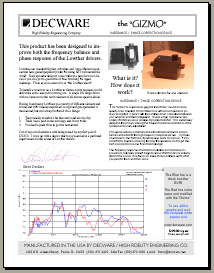
Downloadable Literature GIZMOS
(pair)
|
|
NEW ! GIZGUTS
(pair)
|
Decware is a trademark of High Fidelity
Engineering Co.
Copyright © 1996 ~ 2015
by Steve Deckert
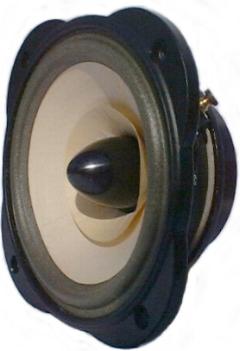
 From this point on it gets real interesting.
One of my favorite pair of reference speakers are an esoteric set
of horn enclosures of my own design that accommodate a 6 inch midrange
driver with an Fs of 90 Hz
From this point on it gets real interesting.
One of my favorite pair of reference speakers are an esoteric set
of horn enclosures of my own design that accommodate a 6 inch midrange
driver with an Fs of 90 Hz 